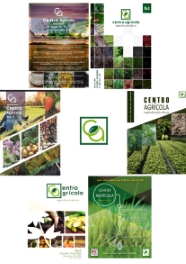CE: 1665 CF: cag04118
SCIENTIFIC ARTICLE
Biological response of Azospirillum spp. to different types of stress
Respuesta biológica de aislados de Azospirillum spp. frente a diferentes tipos de estrés
Carlos Alberto Sangoquiza Caiza1, Yosvel Viera Tamayo2 y Carlos Fernando Yánez Guzmán3
1 Universidad Técnica de Cotopaxi, Unidad Académica de Ciencias Agropecuarias y Recursos Naturales, Especialidad Ingeniería Agronómica. Cotopaxi, Ecuador.
2 Universidad de Granma, Facultad de Ciencias Agrícolas, Centro de Estudios de Biotecnología Vegetal. Carretera a Manzanillo, km 17½, CP: 85100, Bayamo, Granma, Cuba.
3 Instituto Nacional de Investigaciones Agropecuarias INIAP- Programa de Maíz. Sector Cutuglagua, Km 1½, Mejía, Pichincha, Ecuador.
E-mail: This email address is being protected from spambots. You need JavaScript enabled to view it.This email address is being protected from spambots. You need JavaScript enabled to view it.,This email address is being protected from spambots. You need JavaScript enabled to view it.This email address is being protected from spambots. You need JavaScript enabled to view it.This email address is being protected from spambots. You need JavaScript enabled to view it.
ABSTRACT
Azospirillum is one of the most studied free-living rhizobacteria currently of great agricultural interest because of its ability to bind biological nitrogen and produce phytohormones. The present research aimed at the biological response of Azospirillum spp. facing different types of stress. For this purpose, the micro and macro morphological characterization of Azospirillum spp. And its biological response to stress temperature, pH, salinity. The results revealed that the isolates (C2, C3 and C4) of Azospirillum spp. Grow in greater abundance at temperatures between 28-38 °C and pH between 7-8. The C2 and C3 isolates showed good growth up to 3.5 % (m / v) NaCl, whereas the C4 strain was less tolerant. These results have biotechnological applicability and are of great importance when defining and controlling the mass production conditions of Azospirillum spp. for future formulations as biofertilizer in several crops of interest in Ecuador.





